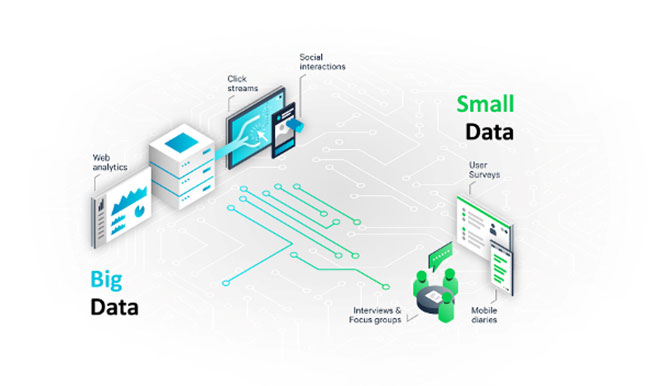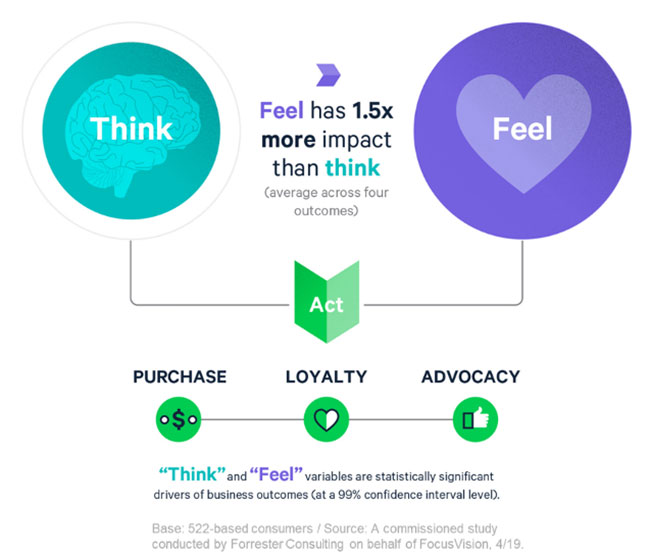SPONSORED CONTENT
 Customer experience matters. People are inundated with choices for every product and service that they use and they are making decisions differently than in years gone by. Today, customer experience (CX) is a deciding factor. Expectations are high and CX effectiveness easily makes or breaks the purchase decision.
Customer experience matters. People are inundated with choices for every product and service that they use and they are making decisions differently than in years gone by. Today, customer experience (CX) is a deciding factor. Expectations are high and CX effectiveness easily makes or breaks the purchase decision.
Like any chain, CX is only as strong as the weakest link. With experience covering every single interaction that your customer has with your brand – from advertising messages, website visits and content consumed to purchase transactions and customer service exchanges – there is a lot to be considered.

It shouldn’t come as a surprise that customer insights are crucial to a business’ success and that there are massive benefits to taking a data-driven approach. Delivering high-quality, relevant customer experiences that resonate on an emotional and rational level leads to increased customer satisfaction or retention, new innovations and increased sales.
Drowning in data
Despite the positive impact insights can provide, recent predictions from Forrester suggest that most companies are still struggling to put useful insights programs into place.
Gathering data is all about understanding what your customers want – how they think and feel – so you can predict how they will act.
 While big data has fallen from the peak of inflated expectations into the trough of disillusionment (Gartner actually removed big data altogether from its Hype Cycle in 2015), its allure remains. Martin Lindstrom, founder and chairman of Lindstrom Company and author of “Small Data: The Tiny Clues that Uncover Huge Trends,” notes in a recent Harvard Business Review Analytical Services (HBRAS) study, sponsored by FocusVision, “The biggest problem with corporate data today is that everyone is so obsessed with getting big data solutions on board.”
While big data has fallen from the peak of inflated expectations into the trough of disillusionment (Gartner actually removed big data altogether from its Hype Cycle in 2015), its allure remains. Martin Lindstrom, founder and chairman of Lindstrom Company and author of “Small Data: The Tiny Clues that Uncover Huge Trends,” notes in a recent Harvard Business Review Analytical Services (HBRAS) study, sponsored by FocusVision, “The biggest problem with corporate data today is that everyone is so obsessed with getting big data solutions on board.”
 Emotions matter, though. Lindstrom goes on to say, “You have to get your hands dirty to see the world from the customer’s point of view. You have to put yourself in their shoes and feel what they feel. Then you have something valuable.”
Emotions matter, though. Lindstrom goes on to say, “You have to get your hands dirty to see the world from the customer’s point of view. You have to put yourself in their shoes and feel what they feel. Then you have something valuable.”
CX strategy falling short
Companies have spent years building databases, data sources and data-driven strategies. However, they still struggle with effectively operationalizing data to understand customers and predict business outcomes. The same HBRAS study found that a mere 20% of companies believe their customer experience strategy to be very effective.
Clearly an ineffective CX strategy does not create a sustainable business. To win in the experience economy, at minimum you need to deliver relevant experiences to your customers. The way to do this is to build programs based on a holistic understanding of them.
As we enter 2020, a shift will occur as companies turn inward to address these challenges and ultimately serve their customers better. There are three key areas where this will take place:
Not an either-or: Integrating big and small data. We know that big data – CRM, web analytics, social media interactions, POS and many others – provides crucial information on what customers are doing and the actions they are taking. It helps create digital engagement strategies and provides indications on performance. This data tells you what people are reacting to but not why (or why not).
Digging into the “why” is crucial. Recent research from Forrester, commissioned by FocusVision, uncovered that how a person feels about a brand has a 1.5 times greater impact than how they think on driving sales, brand loyalty and advocacy when compared with other factors. Further, brands can leverage this data to predict business outcomes.
We can see that both types of data have their intrinsic value; however, this value is compounded when they are integrated, delivering a holistic picture of the customer, their journey and their feelings.
Companies are recognizing that combining these two types of data helps brands unlock customer understanding and open the door to business opportunities.
Multi-layered investments: Systems, processes and skills. Companies have technology problems. They use multiple technologies from multiple vendors, resulting in a technology stack where each does one thing. This means data comes in from numerous sources, in different formats and streams into various departments. Most of these technologies are unconnected, with limited ways to view the data in a single place, making it extremely difficult to derive what decisions should be based upon.
The challenges for companies will be to figure out how to successfully integrate all these data sources. This will mean looking at all areas, from systems and processes to skill sets and training.
Building internal relationships: AKA reducing silos. Another hindrance to successful customer insights is a lack of collaboration across departments. Only 54% of marketers report that customer insights and marketing regularly communicate with one another. While research departments are equipped to gather, analyze and translate customer data, marketers must also be able to understand and leverage this data to inform and execute successful strategies.
For researchers, sharing data in digestible formats that enable self-service insights is critical so that others in the organization can more efficiently leverage insights. Of course, some of this will need to be enabled by the investments in systems, processes and skills.
Even in the current climate, however, research professionals are well-poised to become strategic business partners amidst the transition to CX-centric marketing. We are already the conduit between the customer and the business. But with the reduction of silos, this role becomes evermore important and impactful.
The bottom line?
2020 could potentially be a trying year for brands but those with strong CX strategies will rise to the top. Shifting customer behaviors and market forces portend difficult times for brands ahead of a looming recession and ever-increasing customer expectations. Knowing this, smart brands will bite the bullet, turn their attention inward and address the roadblocks to building successful CX strategies and implementations. This is far from an easy road ahead but the benefits could mean survival.

